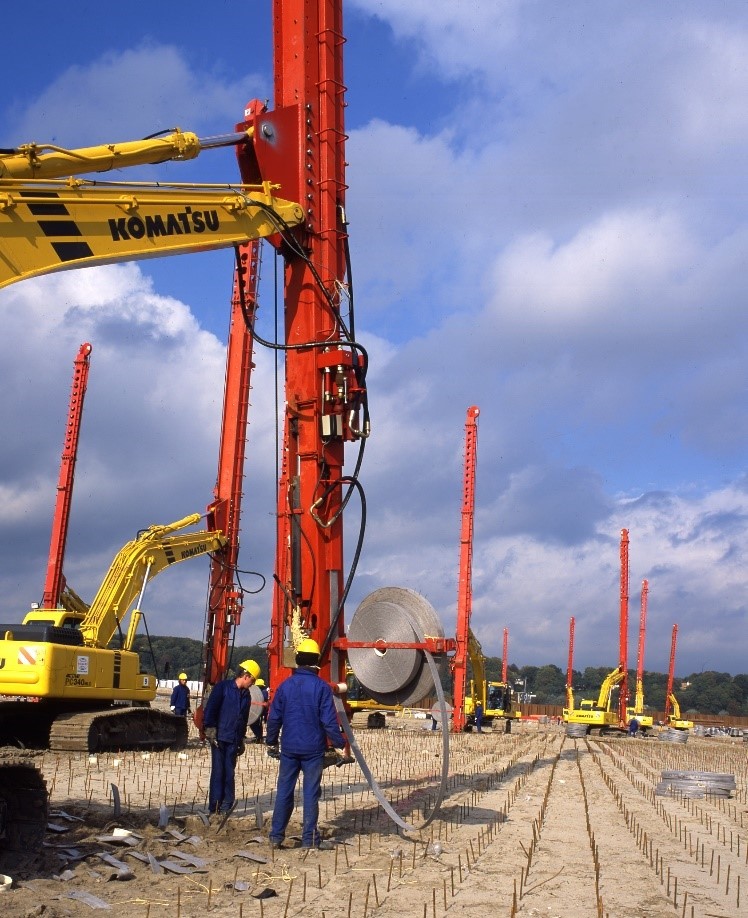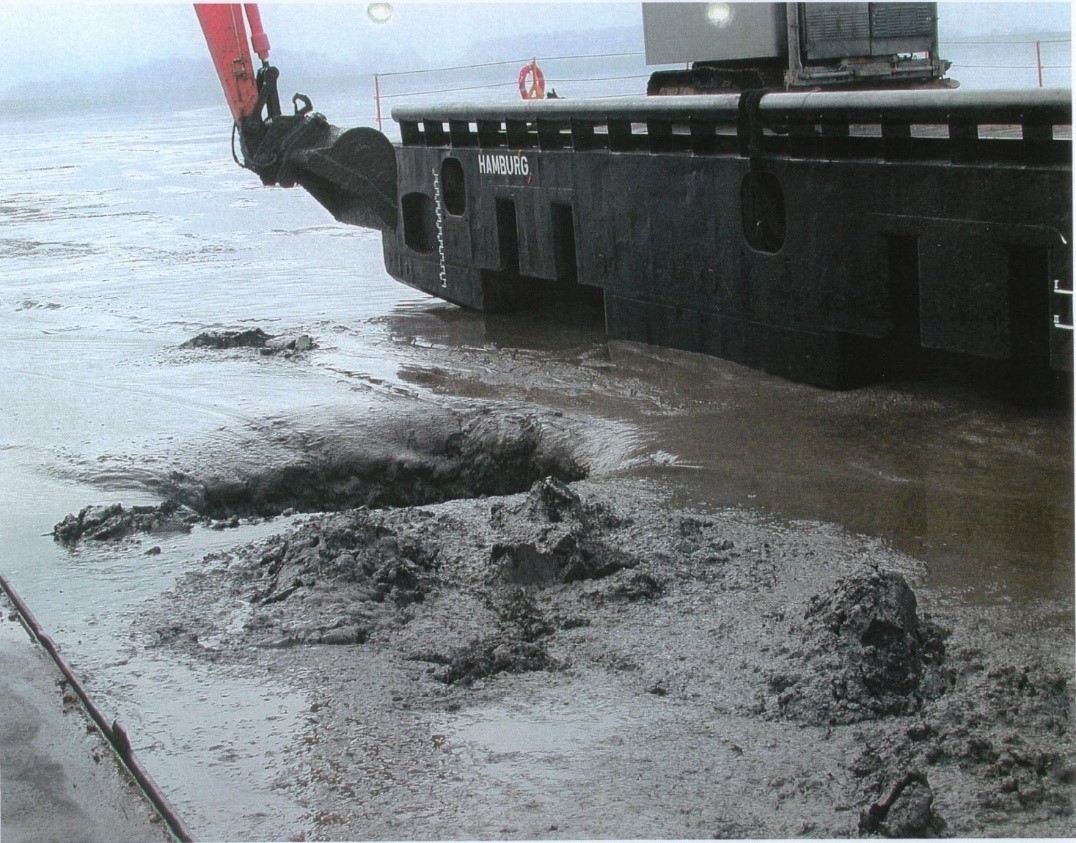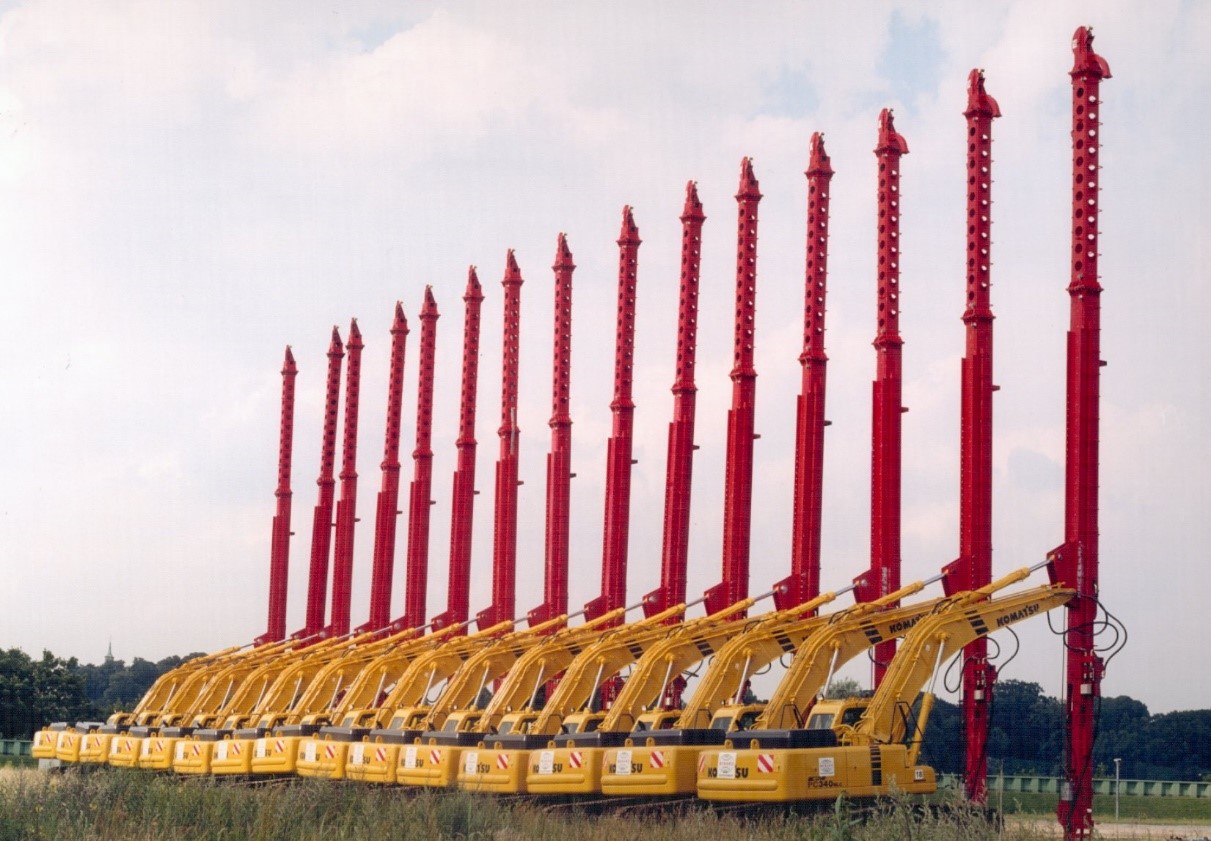

Hamburg is the headquarters of Airbus in Germany and with Toulouse, one of the European aircraft manufacturer's two most important production sites, The launch of the A380 necessitated the construction of a new assembly line because several stages of the plane's fabrication were planned for Hamburg.
Building a factory on mud
The Airbus factory is in the Ebe estuary opposite the port of Hamburg. This location has major logistic advantages, but the planned site of the new factory is on a marshy area in the riverbed, composed of an 8 to 14 metre-deep dayey mud and day on compact sand.

Airbus site, Hambourg
© Photothèque Menard

Building a factory on a very soft soil like mud is obviously impossible because it cannot support such a building. An 8-metre layer of sand was laid on the mud layer to induce its settlement by dewatering the saturated mud by loading and create a stable platform for the factory. Studies showed that this loading would cause the site to settle by 3 metres over 30 years, if nothing was done to accelerate this process before construction.
300,000 vertical drains, 10 metres long and 60 centimetres apart, reduced the settlement time to 18 months by expelling the water in the mud towards the permeable layers of sand. When this process was complete the soft soil layer was consolidated and the new factory could then be built.
Draining to expel water
Mud is a very soft soil composed of minerals, organic matter and billions of microscopic cavities full of water. As water circulates extremely slowly in mud - approximately 0.5 millimetres a day in this case - the water in the middle of the mud layer would have taken 30 years to reach the layers of sand. Vertical drains were installed in the mud to evacuate the water more rapidly because the water then only has to travel a maximum of 30 centimetres through the mud to reach the drains, where it then flows to the layers of sand above and below the mud. Using this technique, the settlement time was considerably reduced.
A few figures
An 8 meter layer of sand was laid over 141 hectares, i.e.
12 million cubic meters of sand.

Airbus site, Hambourg
© Photothèque Menard